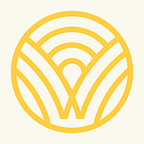2021 PAEMST Spotlight: Johanna Brown
This week we’re spotlighting Washington’s state finalists for the Presidential Award for Excellence in Math and Science Teaching (PAEMST) finalists, who will go on to be considered for the national award in 2021. Check out the rest of our PAEMST Spotlight interview series here.
What has surprised you about teaching during a pandemic?
How connected we can still be in a virtual classroom. We had sing-alongs, taped cameras to the end of spectroscopes, and there were still doodles and work being turned in. Humans will always use tools to find ways to connect and these connections with my students are what have gotten me through the last year.
Is there a distance learning lesson that you are particularly proud of?
Yes! My student teacher and I wrote an at-home lab together for students to experience and ponder electromagnetic radiation. They calculated the wavelength of microwaves with chocolate bars we sent home, felt the infrared radiation from an oven, and figured out why LED and CFL bulbs are much more energy efficient than incandescent bulbs. It was accessible and fun for students (not many people mind eating a chocolate bar for chemistry class!) and was the best I have ever connected students to the abstract ideas of electromagnetic radiation.
What is your greatest wish for school next year?
That we don’t go back to business as usual. This year taught me how to release control over to students and confront many of my biases. We need to keep the humanity of the people in schools at the forefront of all we do, this means mental, physical, and emotional health and learning as a lifelong skill above all else.
What advice would you give to parents or caregivers who want to incorporate more science and mathematical thinking into their students’ lives?
The mantra “Why tell when you can ask?” If your student has a question about the world around them, ask them what they think! This normalizes how okay it is to be totally wrong in our wonderings and pushes them to build strong connections while attempting to explain the “why.” It’s a great skill that you can facilitate even when you don’t have the answers yourself! Then, look it up and learn together and see how close your hypothesis came.
Is there anything that has been easier to do in a remote school environment?
I have loved how much one on one time I got with students on Zoom. In a big classroom with many students, it is hard to find the time and space to deeply understand each individual’s needs in my classes. Setting up conferences each term with my students gave us a safe place to talk about their challenges and hopes which made me a better teacher for them.
What is one concept your students struggle most to understand and how do you try to address this struggle?
I’m going to cheat a little and have it be a concept about learning. Many students come to me thinking that confusion is bad, that feeling a sense of not understanding means that something is wrong with them. More than teaching chemistry, my work is about helping students push through confusion and into the realm of questioning, reasoning, and seeing struggle as a productive process. We do this through many discrepant events, valuing the process of figuring out an answer, and tracking each student’s growth in understanding through models and reflections. Science is a way of thinking, not about having the right answers.
Where do you see more opportunity for collaborating with other disciplines to teach math or science?
As I have incorporated project-based learning into chemistry my eyes have been opened to all of the amazing STEAM connections across life! Currently students are working on experimental design as they create and test their own pottery glazes in interdisciplinary teams with our school’s ceramics class. Another class is working on reducing food waste at our school and are already connecting with our food service team to create a student advisory board to help with decision-making. When we open our learning up to phenomena and globally-important real-world questions the collaboration becomes inherent to the student learning experience.
Who have you been following or reading from a math and science perspective in the past year? Any other publications, blogs, etc. that you would recommend?
To think about racial justice in the educational space I listen to the “Too Dope Teachers and A Mic” Podcast, check them out!
I have always been a big fan of Stem Teaching Tools out of UW (even though I have my master’s from WSU!), their briefs are actionable and at the forefront of the intersection of equity and science-teaching.
The new InquiryHub year-long curriculum for chemistry is the new OER phenomena-based replacement many chemistry teachers have been looking for. Their oysters and search for life unit look especially wonderful. I plan to dig into these over the summer.
Finally, the idea of critical hope, maintaining hope for our students’ futures while acknowledging and criticizing the systems and processes that harm them.
